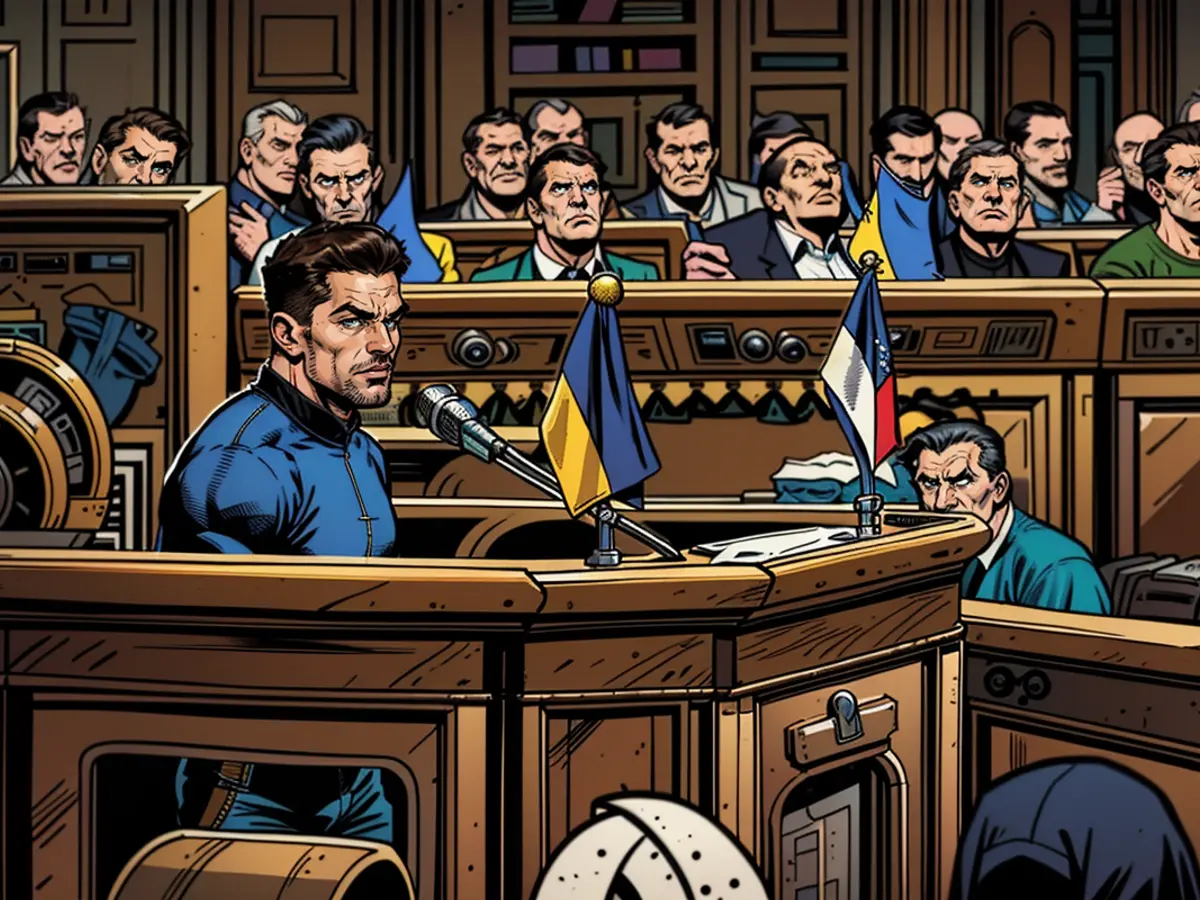The Ukrainian administration's strategy for success
Ukraine aims to wrap up the conflict with Russia on its favored terms within the next year, as mentioned by President Zelensky in Kyiv. He outlined a five-point "victory plan" with three points kept under wraps. The cornerstone of this strategy is an immediate invitation for Ukraine to join the Western military alliance, NATO. President Zelensky pointed out in parliament that Russia has leveraged Europe's geopolitical confusion and Ukraine's absence from NATO to launch the attack. According to him, NATO membership would serve as a solid basis for peace. Here's a breakdown of the five points and their potential success:
1. NATO Invitation
There's no unanimity on this matter within NATO. Although NATO leaders consistently express their hope for Ukraine's future membership in the alliance, several alliance members openly oppose the idea. One of Russia's stated objectives for the conflict is to establish a neutral status for Ukraine.
2. Enhanced Defense and Expanding the War
The second point involves boosting Ukraine's defense capabilities and potentially escalating the conflict onto Russian territory. "It's realistic to maintain our positions in Ukraine while simultaneously driving the conflict back onto Russian soil, enabling the Russians to truly appreciate the realities of war," said Zelensky. The goal is to channel Russian resentment towards the Kremlin. Ukraine's ongoing operations in the Russian border region of Kursk will continue, but western approval is required to use western weapons against Russian targets. So far, the USA, UK, and France have supplied Ukraine with missiles capable of reaching targets up to 300 kilometers away. The USA has yet to approve this, while the UK is more open to the idea.
3. Arming Ukraine for Deterrence
With the help of Western partners, Ukraine needs to develop and stockpile sufficient conventional weapons to deter further Russian aggression. "If Russia understands that there's a response, and knows what that response looks like, they'll opt for negotiations and stable coexistence with strategic opponents," explained Zelensky. In other words, strength is a prerequisite for peace. Several Western arms manufacturers are starting to produce in Ukraine, while Zelensky anticipates financial support from Western countries, such as the USA and Germany, which have been gradually decreasing their assistance over the past two and a half years.
4. Access to Ukrainian Raw Materials
Ukraine holds valuable raw materials, estimated to be worth billions of dollars. These include uranium, titanium, lithium, and graphite. Zelensky wants to determine whether these resources will benefit Russia and its allies in the global competition or remain with Ukraine and the democratic world.
5. Ukraine as a European Security Powerhouse
Following the termination of Russia's military aggression, President Zelensky envisions Ukraine leveraging its military expertise to strengthen Europe's and NATO's security. He proposed that Ukrainian soldiers could potentially replace US troops in Europe, which aligns with the US's ongoing efforts to decrease its commitment in Europe, regardless of whether it's controlled by the Republicans or Democrats. Implementing this proposal would demand intricate negotiations between Washington, European capitals, and Kyiv. Zelensky has already put forth this plan, including confidential details, in Washington, London, Paris, Rome, and Berlin. A presentation is scheduled for Thursday at the European Council in Brussels. President Zelensky aims to bring the conflict to an end on favorable terms for Ukraine by the end of next year.
The Commission, led by its members, will likely have discussions regarding Ukraine's potential NATO membership, given the divided opinions within the alliance. The future of Ukraine as a European security powerhouse, as proposed by President Zelensky, could significantly impact the Commission's strategies and collaborations with Kyiv and other European countries.








